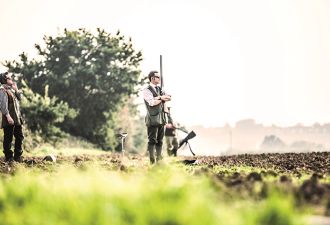
The results from the 2015 Game Shooting & Fishing Census, compiled by leading property consultancy Strutt & Parker and the UK’s No1 free shoot finder GunsOnPegs, confirm that the shooting industry is in exceptional health and experiencing growth at all levels.

The results from the 2015 Game Shooting & Fishing Census, compiled by leading property consultancy Strutt & Parker and the UK’s No1 free shoot finder GunsOnPegs, confirm that the shooting industry is in exceptional health and experiencing growth at all levels.
The survey, which had over 3,000 respondents, highlights that the sports of shooting and fishing act as a substantial contributor to the economy and continue to be enjoyed by a wide variety of people from different backgrounds, demonstrating that they are both sports for all.
James Horne, Chairman of GunsOnPegs and RodsOnRivers, said: “It was encouraging to discover that of those guns that responded to the survey, the average spend per head, per year on shooting alone was a substantial £5,533 – with 38% of respondents stating that they planned to spend even more this coming season. The census also firmly established that the most important feature of a shoot day for 63% of respondents was ‘having fun with friends’. This sends a clear message about the continued and growing popularity of the sport.”
Rhodri Thomas, Partner at Strutt & Parker, said: “It’s fascinating to see how the shooting industry is diversifying and modernising in these increasingly competitive times. The shooting season has been extended for many by the continued rise in the amount of simulated game shooting available – which is opening up the sport and attracting new audiences. Over the last six years, we have seen a constant increase in the number of operators and the average number of days attended is now nearly two per year. This is also matched by the average number of lessons taken per year now at 1.52. Three years ago 66% claimed never to have had a lesson.”
The number of shoots visited per gun each season continues to grow steadily. The increase to nearly six shoots from last season’s five demonstrates that mobility and choice are fundamental issues for both shoots and guns to consider. The distance to travel to shoots is not an issue to the majority of guns; with 64.8% prepared to travel over 100 miles when paying for a shoot. The distance of travel results in a considerable number of hotel stays during the season, with the average gun spending nearly three nights in paid for accommodation each season – contributing to the UK’s tourism economy. 6% of the survey’s respondents are from outside the UK, demonstrating that a significant proportion of guns are travelling from overseas to shoot here.
In contrast to shooting, the fishing industry is facing some considerable challenges in 2015, particularly for salmon in the UK. Scotland is still the most sought after destination for fishing in the UK, but is showing the biggest decline of 8.3%.The North East was the only place to show a meaningful increase in anglers this year of 16.15%. The average spend per head, per annum on fishing alone is £1,505. 66% of each rod’s average spend is in the UK, but spend in the UK has fallen by 15% in the last year and 31% of rods now fish abroad.
James Horne comments: “Unfortunately the pull from abroad continues to be an issue. As nothing thus far has been done to stem the problem of commercial netting of salmon in our seas, there continues to be difficulties. Value for money is luring fishermen abroad, and large catches are encouraging rods to pay a premium. Rods are prepared to pay 63% more for a day’s fishing abroad than in the UK. We believe that the biggest opportunity to start to bring some of the international travellers back is through protecting our salmon and as a result, making our water systems more lucrative.
More fisheries have a catch and release policy than last year - 92% up from 86% last year - which fits in the line with the awareness of the decline in Atlantic salmon.
Horne continues: “We believe catch and release, which ensures that all larger fish which are caught weighing over 7 lbs are released back into the water, is the key for the success of British rivers and the Atlantic salmon’s future. We have seen fishing decrease over the past few years due to dwindling numbers of salmon being caught. The long term trend will be a continual decline if we don’t start to do something about protecting our Atlantic salmon.”
View the Game Shooting & Fishing Census 2015.
